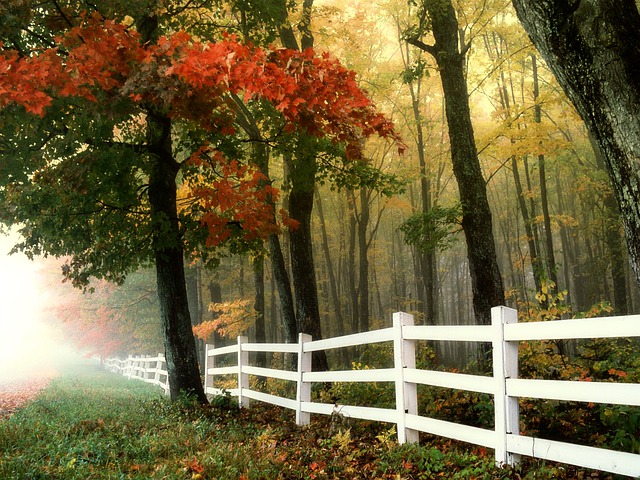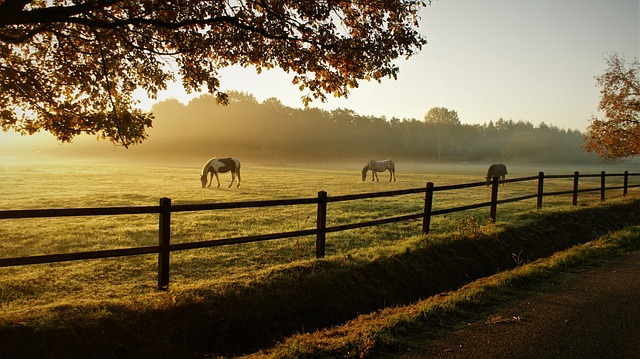A fence is a barrier made of posts and rails, often open, while a wall is a solid structure used for separation or support, typically with no gaps.
What is a Fence?

A fence, by definition, is a barrier typically made of posts, panels, or boards connected together. It is usually constructed to mark property boundaries, provide security, or enhance privacy.
Definition of a Fence
A fence is a structure that is typically made of wood, metal, or wire and is used to enclose a specific area. Its main purpose is to provide security, privacy, and boundary delineation. The definition of a fence refers to its function as a physical barrier, usually consisting of posts connected by horizontal rails or panels. Fences are commonly used in residential, commercial, and agricultural settings.
Unlike walls, which are solid structures usually made of brick, stone, or concrete, fences allow visibility and airflow. They are also generally shorter in height compared to walls. Fences can be installed in various styles and designs, including picket, privacy, chain-link, and electric fences.
The materials used to construct a fence depend on its intended purpose, design, and budget. Common materials include wood, vinyl, aluminum, and wrought iron. Each material has its own benefits and considerations in terms of durability, maintenance, and aesthetics.
In legal terms, fences often have specific regulations and restrictions, such as height limitations and setback requirements. It is important to consult local building codes and ordinances before installing a fence to ensure compliance.
The definition of a fence is crucial when choosing the appropriate type and style for your specific needs. A fence is a structure used for enclosing an area, providing security, privacy, and defining boundaries. It is made of various materials, has different designs, and is subject to legal considerations.
As you consider installing a fence, make sure to research local regulations, consider the materials and design that best suits your purposes, and seek professional advice if needed.
What is a Wall?

A wall is a solid structure that is built using bricks, stones, concrete, or other materials. It is designed to create a rigid boundary or barrier between spaces.
Definition of a Wall
A wall serves as a vertical structure that encloses or divides an area, made of durable materials like bricks, concrete, or stones. Commonly found in buildings, houses, and outdoor structures, walls provide essential support, stability, and protection.
Unlike a fence, which is typically lighter and has a more open design, a wall presents itself as a solid barrier. It offers heightened privacy and security due to its taller structure. Walls have versatile use cases, including the separation of rooms within a house or different sections of a garden. Additionally, they can function as boundaries or perimeters for properties.
The definition of a wall is lucid and straightforward. Differentiating it from a fence is crucial, as they serve distinct purposes and possess unique characteristics. While fences generally denote boundaries or create barriers, walls are more substantial and permanent structures. Their materials, size, and installation processes vary significantly between the two.
Differences Between a Fence and a Wall
- Purpose: A fence is often used for functional or decorative purposes, while a wall is primarily built for structural integrity and support.
- Structure: A fence is typically composed of separate components, such as posts and panels, that are assembled together. On the other hand, a wall is a solid and continuous structure without any gaps or openings.
- Materials: Fences are commonly made from materials like wood, vinyl, metal, or composite, offering more variety in terms of design and appearance. Walls, on the other hand, are often made from bricks, concrete, stone, or other heavy-duty materials.
- Height/Size: Fences are typically shorter in height and can be easily customized to desired dimensions. Walls, in contrast, tend to be taller and more substantial in size.
- Installation: Fences are generally easier and quicker to install compared to walls. They can be easily assembled by homeowners or professionals. Walls require more complex construction and may need the expertise of builders or contractors.
- Cost: Fences are generally more cost-effective and budget-friendly, depending on the chosen materials and design. Walls, with their more robust construction and materials, tend to be more expensive.
- Legal Considerations: Fences may have specific regulations or guidelines regarding their height, location, and design, based on local zoning laws. Walls may also require permits depending on their size and location.
1. Purpose
The purpose of a fence is to create a boundary or barrier between two areas, providing security, privacy, and protection. Fences are commonly used to enclose a property, keeping unwanted people or animals out and ensuring the safety of those inside. They can also be used to define property lines and prevent encroachment.
Fences serve various purposes depending on the specific needs of the property owner. For residential properties, the purpose of a fence might be to enhance privacy, prevent children or pets from wandering off, or create a safe and secure space for outdoor activities. In commercial or industrial settings, fences are often used for security reasons, to deter trespassers and protect valuable assets.
The purpose of a fence can also extend beyond practical considerations. Fences can add aesthetic value to a property, enhance curb appeal, and contribute to the overall design and landscaping. Some types of fences, such as picket fences, are symbolic of a traditional and idyllic lifestyle.
When choosing a fence, consider your specific needs and goals. Determine the purpose you want the fence to serve, whether it’s security, privacy, or aesthetics. Consider the materials, size, and design that align with your purpose and budget. By carefully considering the purpose of the fence, you can make an informed decision that meets your requirements.
The purpose of a fence is to provide security, privacy, and protection, while also adding aesthetic value to a property. Consider your specific needs and goals when choosing a fence to ensure it serves its intended purpose effectively.
2. Structure
- Design: The structure of a fence and a wall can differ in various ways. A fence is typically made up of vertical posts connected by horizontal rails, forming an open structure. On the other hand, a wall is a solid and continuous structure with no gaps or openings.
- Components: Fences are often constructed using separate components such as panels, pickets, or wire, which are assembled together. Walls, on the other hand, are built using bricks, blocks, or stones that are stacked and connected with mortar.
- Support: Fences rely on posts that are driven into the ground or attached to a foundation to provide stability. Walls, however, require a strong foundation, often made of concrete, to support their weight and prevent leaning or collapse.
- Height: Fences are typically lower in height, ranging from a few feet to several feet, depending on the purpose. Walls can be much taller, providing greater privacy and security, with heights reaching multiple stories.
- Appearance: Fences offer a more open and decorative aesthetic with various designs and materials to choose from, such as wood, vinyl, or metal. Walls have a solid and substantial appearance that can create a more imposing and formal look.
Pro-tip: When deciding between structure options, consider the level of privacy, security, and aesthetic appeal you desire, as well as any specific regulations or restrictions in your area.
3. Materials
| Materials | Fence | Wall |
| Wood | ✓ | ✓ |
| Metal | ✓ | ✓ |
| Concrete/Cement | – | ✓ |
| Brick | – | ✓ |
| Stone | – | ✓ |
| Wrought Iron | ✓ | – |
| Chain Link | ✓ | – |
When it comes to materials, both fences and walls can be made from a variety of options. Wood and metal are common materials used for both fences and walls. They are versatile and can be designed to fit different aesthetics. Concrete, brick, and stone are materials mainly used for constructing walls, providing a solid and durable structure. Wrought iron and chain link fences are popular choices for fences, offering both security and visibility. Each material has its advantages and considerations, such as maintenance, cost, and longevity. It is important to select the material that best suits your needs and preferences when deciding between a fence and a wall.
4. Height/Size
| Fence | Wall |
| Fences are commonly available in various heights, ranging from 3 feet to 8 feet. | Walls are typically taller and more substantial in size compared to fences. They can range from 6 feet to several stories high. |
| Fences often have a lower height to maintain visibility and provide a boundary without obstructing the view. | Walls are usually built for privacy, security, and to block the view, hence their increased height. |
| The height of a fence can depend on its purpose. For example, a decorative picket fence may be shorter, while a privacy fence will generally be taller. | The height of a wall often depends on the location and purpose. Buildings, for instance, have walls that need to meet certain safety and structural requirements. |
It is important to consider the height and size of a fence or a wall based on your specific needs and preferences. Local regulations may also dictate the maximum height allowed for fences and walls in certain areas. By understanding these differences, you can make an informed decision when choosing between a fence and a wall for your property.
5. Installation
- Installing a fence or a wall involves several steps to ensure proper installation and stability. Here is a list of steps to consider during the installation process:
- Determine the boundaries and layout of the fence or wall.
- Obtain necessary permits or permissions, if required by local authorities.
- Measure and mark the positions of the fence posts or wall foundation.
- Dig holes for the fence posts or wall foundation, ensuring appropriate depth and spacing according to the design.
- Place the fence posts or pour the concrete for the wall foundation into the prepared holes.
- Secure the fence posts with concrete or backfill the wall foundation with mortar.
- Install the fence panels or build the wall layer by layer, following the design or pattern.
- Attach the fence panels to the posts or reinforce the wall with additional layers of bricks or stones.
- Check for stability and make necessary adjustments or reinforcements if needed.
- Finish the installation by adding any desired decorative elements or applying a finish coat of paint or stain.
- Regularly inspect and maintain the fence or wall to ensure its longevity and functionality.
The concept of fences dates back to ancient times when civilizations began to establish boundaries and protect their properties. The earliest known fences were made of natural materials like wood or stones, often stacked or woven together.
Over time, fences evolved in design and materials, incorporating metal, concrete, and other modern materials for enhanced durability and security.
Today, fences serve various purposes, including privacy, security, decoration, and animal containment. Proper installation is crucial to ensure the effectiveness and longevity of fences and walls, serving as essential elements in defining and separating spaces.
6. Cost
Considering the cost of a fence versus a wall, several factors should be taken into account. The cost of materials will vary depending on the chosen fence or wall type. For instance, fences can be made of wood, vinyl, aluminum, or chain-link, while walls can be constructed using brick, concrete, stone, or wood.
Installation costs are generally higher for walls due to the complexity of their construction, whereas fences may have lower installation costs depending on the design and size. For example, hiring a professional to install a vinyl fence can range from $3,000 to $7,000, while building a brick wall can cost between $8,000 and $15,000.
Maintenance costs should also be considered. Fences often require regular maintenance, such as painting or replacing damaged panels, while walls generally require less maintenance.
The lifespan of a fence or wall should be taken into consideration. Fences typically have a shorter lifespan, depending on the materials used, while well-constructed walls can last for decades or even centuries.
When comparing the cost of a fence and a wall, it is essential to assess individual preferences, budget, and the desired level of durability and maintenance.
7. Legal Considerations
| Legal Considerations | Description |
|---|---|
| 1. Property Boundaries | Ensure the fence or wall is installed within your property boundaries to avoid encroaching on neighboring properties. |
| 2. Building Codes | Check local building codes and regulations to determine if there are any specific requirements or restrictions on fence or wall construction. |
| 3. Permits | Obtain the necessary permits from the local authorities before installing a fence or wall, especially if there are certain height or material restrictions. |
| 4. Neighborhood Associations | Check with any neighborhood associations or homeowners’ associations to ensure compliance with their rules and guidelines regarding fence or wall installations. |
| 5. Utilities | Consider the location of underground utilities such as gas lines, water pipes, or electrical cables to avoid any damages or complications during installation. |
| 6. Privacy Laws | Respect any privacy laws or ordinances that may restrict the height or design of fences or walls, particularly in residential areas. |
| 7. Shared Boundaries | If the fence or wall is being installed along a shared property boundary, make sure to communicate and agree with your neighbor on the type, cost, and maintenance responsibilities. |
Similarities Between a Fence and a Wall
While fences and walls have distinct differences, they also share some similarities:
- Physical Barrier: Both fences and walls serve as physical barriers that define boundaries and enclose an area. They can provide privacy, security, and protection.
- Structure: Both fences and walls are constructed using various materials such as wood, metal, concrete, or brick. They are designed to withstand external forces and provide structural integrity.
- Visual Barrier: Both fences and walls can act as visual barriers, obstructing the view from outside and providing a sense of privacy to the enclosed area.
- Boundary Marker: Fences and walls are often used to mark property boundaries, delineating the separation between different properties or areas.
- Enhancing Aesthetics: Both fences and walls can contribute to the overall aesthetics of a property. They can be designed in different styles and finishes to complement the architecture or landscape design.
- Functional Purposes: Fences and walls can serve various functional purposes, such as preventing trespassing, containing pets or livestock, reducing noise, or creating a barrier for safety reasons.
Although fences and walls have similarities, it is important to note that their differences lie in factors such as height, construction materials, permanence, and regulations governing their installation.
Frequently Asked Questions
What’s the difference between a fence and a wall?
A fence is a freestanding structure made of posts and rails or panels, while a wall is a solid structure made of brick, stone, concrete, or other materials.
Are fences or walls generally taller?
Walls are typically taller than fences.
Can a fence provide privacy?
Yes, fences can provide privacy depending on the style and material used, such as privacy fences.
What are some common materials used for fences?
Fences can be made from wood, vinyl, metal, or chain link.
What is a load-bearing wall?
A load-bearing wall supports the weight of a building.
What are the benefits of using a precast concrete fence?
A precast concrete fence offers both security and a rustic look, making it suitable for agricultural purposes or multi-housing units.
Image Credits
Featured Image By – Aritha from Pixabay
Image 1 By – Brigitte Werner from Pixabay








